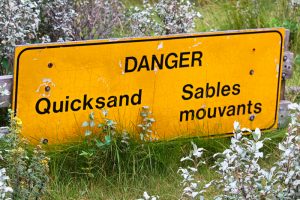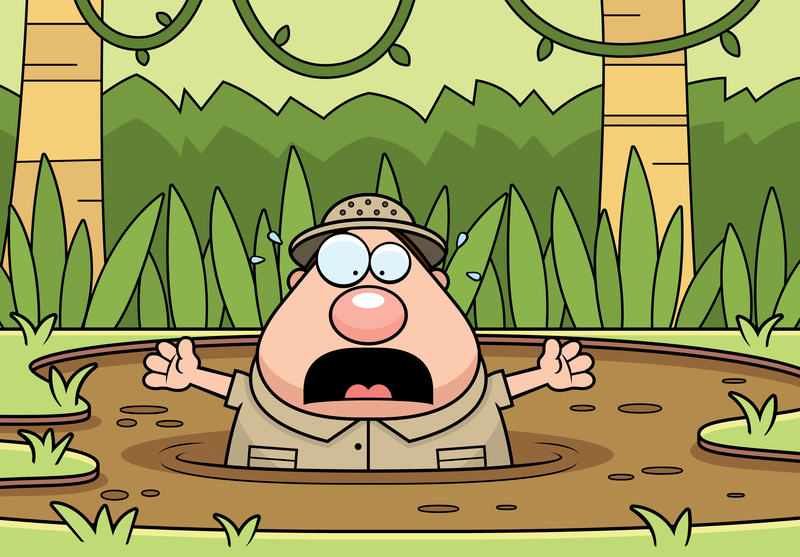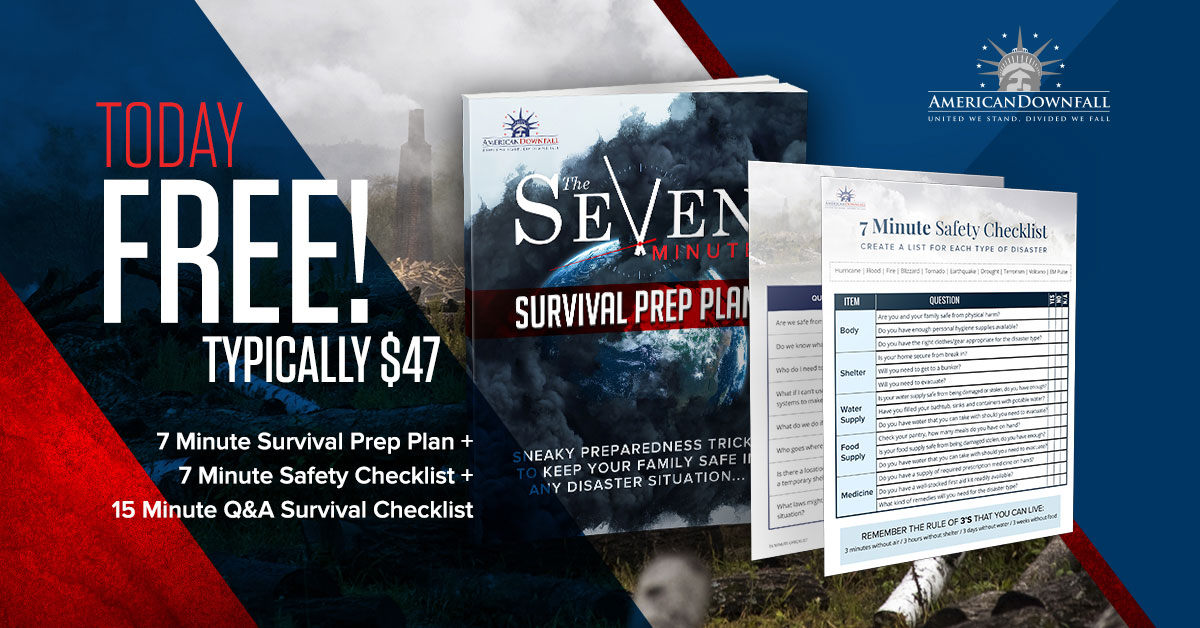Though not as dramatically dangerous as TV and movies like to make it out to be, quicksand can be deadly if you don’t know how to respond to the situation. Fortunately, if you do ever find yourself slowly sinking into the ground, there are some techniques you can use to extract yourself.
Escape Method #1: Avoid it all Together
Yep, like so many other things in life, the best defense is a good offense. For quicksand, that means avoiding getting caught in the first place. To do that you’ll need to know what to look for and be diligent.

First, know what areas are more prone to developing quicksand, you’ll especially need to be on guard around wet areas such as:
- Anywhere after a big rainstorm.
- Glaciers
- Lakes
- Marshes
- Riverbanks
- Swamps
- Tidal Flats
- Known Underground Springs
Features to look for:
- Water bubbling up from the ground.
- Ground with a rippled appearance.
When in doubt, test the ground with a stick or heavy object before moving forward. If the ground gives way, work your way around it.
Escape Method #2: Have an Escape Plan
If despite all your cautiousness, you end up in the soup, you’ll need to know what steps to take to get yourself out.
- Make yourself lighter. Toss aside your backpack, heavy clothing, or other gear.
- Back-up. Before you get too deep, take short quick steps backward toward the solid ground you just came from. Avoid taking large steps that could leave you in a more awkward position if a leg gets stuck.
- Keep your head and arms up. You want to keep your arms and head above the surface as long as possible so avoid trying to bend over or reaching out so far that you submerge your arms.
- Breathe deeply. Air in your lungs makes you more buoyant and deep breathing helps keep you calm and focused.
- Try to Float. If you manage to get up to your waist before extracting yourself, lean back into a back float position like you did in swim classes. This action will distribute your weight more evenly and allow your fee to float up to the surface.

Once your feet come up, use tiny motions to paddle float your way to solid ground.
- Look around you. Take note of your surroundings to see if there are any overhanging branches, vines, or other items you can use to pull yourself out. Make sure you don’t lunge at them in a panic, wait until you’ve stabilized yourself and can carefully reach out to grab hold.
- Free your legs slowly. Alternate legs as you move them toward the surface an inch at a time. Make sure you pause after each movement to let the liquid ground fill the space you just vacated. If you’ve gotten in deep, this may take several hours, but patience is the key to survival here. Large, quick movements will only make your dilemma worse.
- Use a trekking pole. If you have a trekking pole or other type of hiking stick, lay the pole across the surface of the quicksand behind you and lower your back onto it to stabilize yourself while you work to free your legs.
Suggested Article: Wildfire Survival Tips
What NOT to Do
Now that you know what to do let go over what to avoid, besides getting stuck in the first place. To help ensure success extracting yourself, AVOID doing the following:
- Contrary to the movies, we’re not dense enough to sink completely under quicksand. Follow the procedure, and you’ll get through it.
- Tug-of-War. It may be tempting, if you have help around, to get someone to yank you out as quickly as possible. Unfortunately, the vacuum quicksand creates could make this plan cause permanent damage to your body. Keep all movement slow and steady as you work your way out.
- Swinging your arms. When you get into the back float position, avoid the temptation to “backstroke” your way to solid ground. Stick to small movements kept close to your body, so you don’t force the ground to stay in its liquid state.
- Float on your front. Don’t, just don’t. You want to keep your nose and mouth above the surface, not next to it.



